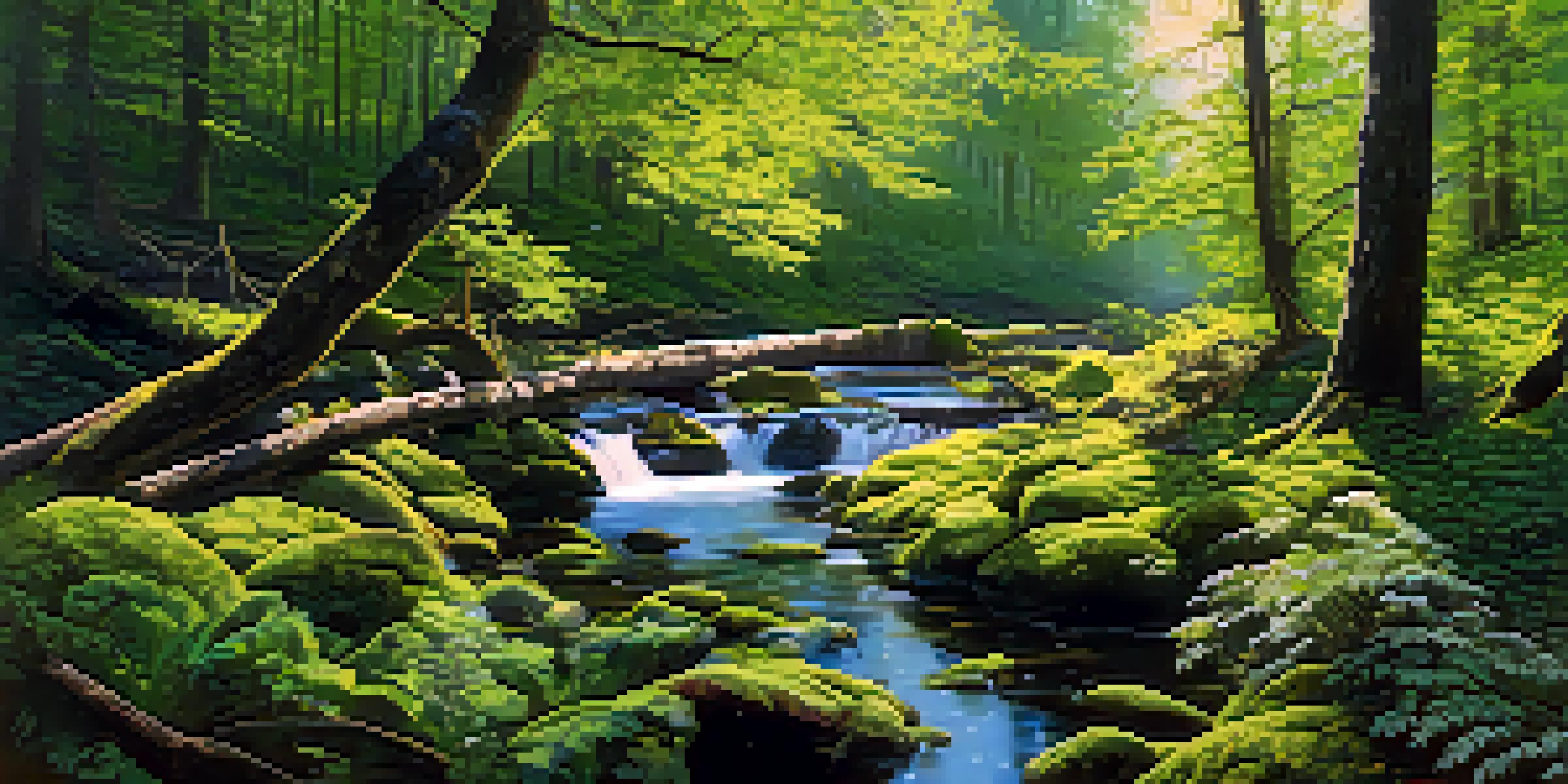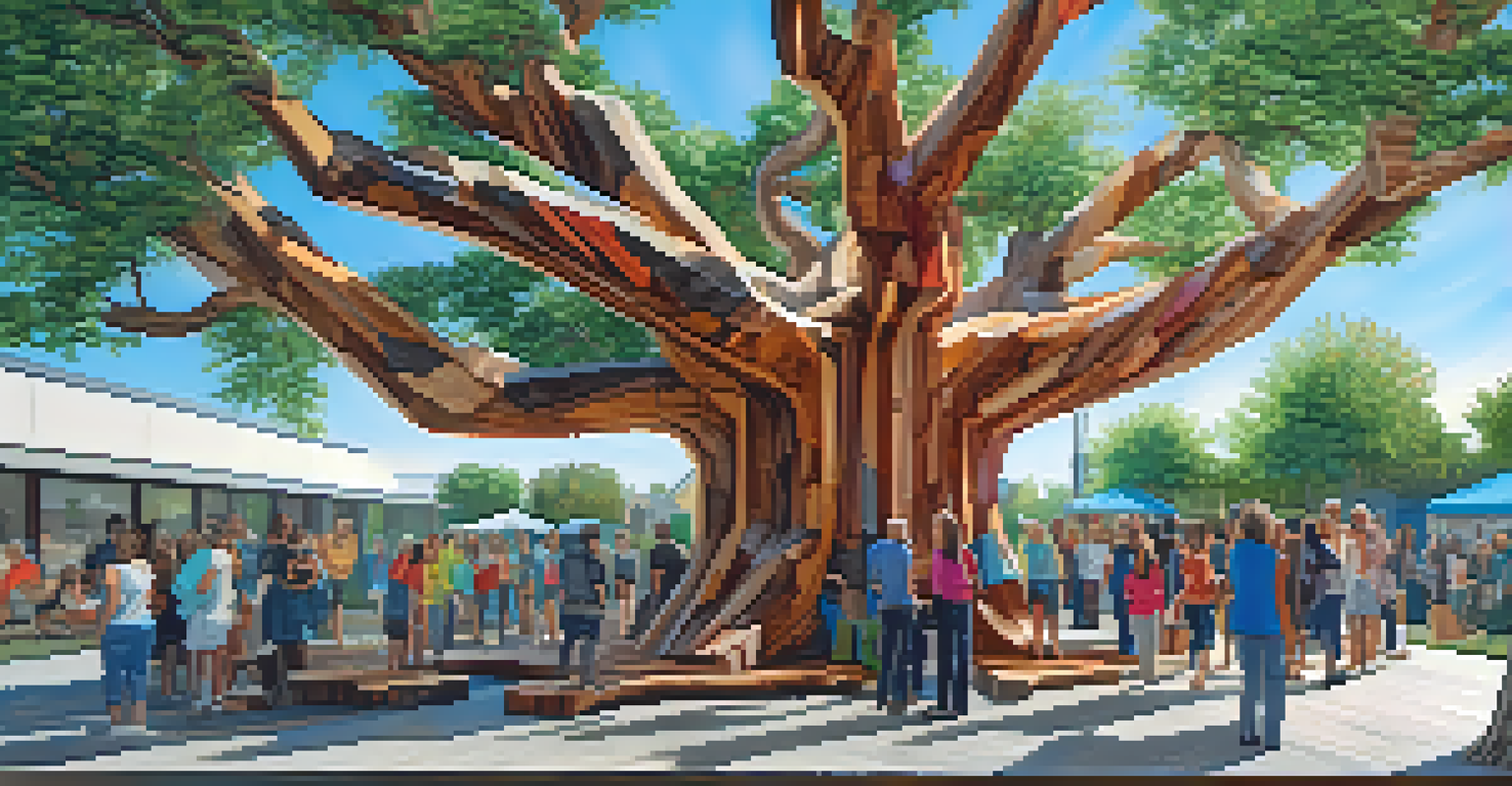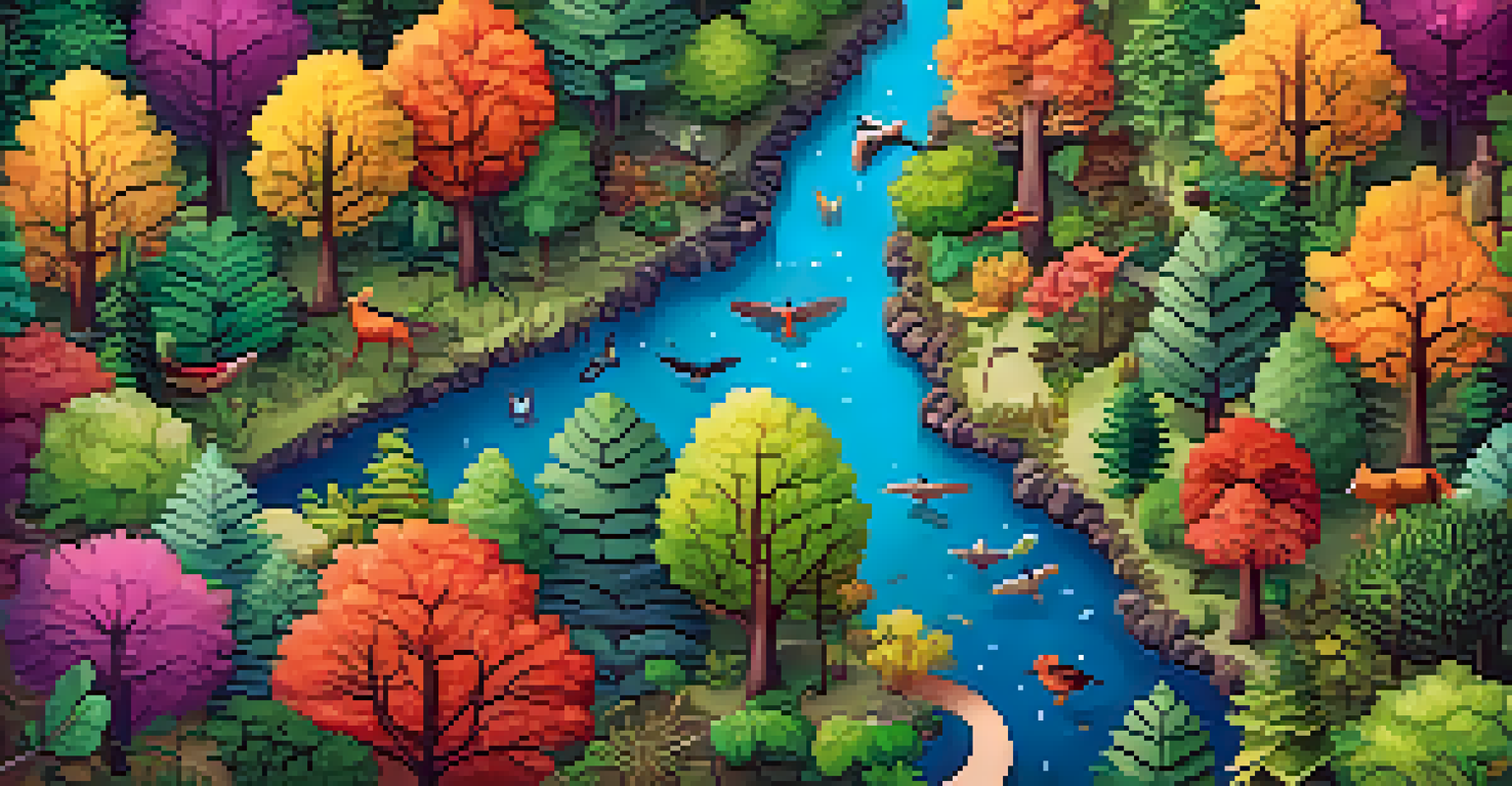Artistic Responses to Deforestation and Its Global Impact

Understanding Deforestation and Its Global Consequences
Deforestation refers to the large-scale removal of trees, often resulting in significant ecological disruption. This practice not only contributes to climate change by increasing carbon emissions but also threatens biodiversity as countless species lose their habitats. The global impact of deforestation can be seen in altered weather patterns, soil erosion, and the disruption of water cycles, which all affect human communities and wildlife alike.
The clearest way into the Universe is through a forest wilderness.
For instance, the Amazon rainforest, often dubbed the 'lungs of the Earth,' plays a crucial role in regulating our climate. When trees are cut down, the carbon stored in them is released, exacerbating global warming. Additionally, indigenous communities that rely on forests for their livelihoods face dire consequences as their homes and resources disappear.
In response to these urgent issues, artists around the world are using their creativity to raise awareness and inspire action against deforestation. Through various forms of art, they aim to connect people emotionally to the cause, making the invisible impacts of tree loss more tangible and relatable.
Art as a Medium for Environmental Advocacy
Art has the unique ability to transcend language and cultural barriers, making it an effective tool for advocacy. Artists often use visual storytelling to convey the stark realities of deforestation, allowing audiences to see and feel the consequences of environmental degradation. This emotional connection can catalyze change, motivating individuals to engage in conservation efforts.

For example, a powerful installation featuring fallen trees and the sounds of chainsaws can evoke a visceral response. Such experiences remind us of what we stand to lose if deforestation continues unchecked. By transforming spaces into immersive experiences, artists can provoke thought and discussion around sustainability and ecological balance.
Deforestation's Deep Impact
Deforestation significantly disrupts ecosystems, contributes to climate change, and threatens biodiversity, affecting both wildlife and human communities.
Moreover, social media has amplified the reach of these artistic expressions, allowing movements like #ArtForEarth to gain traction. Artists share their work online, encouraging followers to reflect on their relationship with nature and the importance of preserving it for future generations.
Examples of Art Addressing Deforestation
One striking example is the work of environmental artist Chris Jordan, who created a series titled 'Running the Numbers,' which visualizes the scale of consumerism and its impact on the environment. His pieces challenge viewers to confront the overwhelming statistics related to deforestation and waste. By translating data into compelling visuals, he makes the abstract concept of environmental destruction more relatable.
Art is not a luxury, but a necessity for survival.
Another notable project is the 'Tree of Life' sculpture, constructed from reclaimed wood and designed to symbolize resilience and restoration. This artwork not only highlights the beauty of trees but also serves as a reminder of the importance of reforestation efforts. It encourages viewers to consider the role they can play in healing the planet.
These examples illustrate how art can serve as a powerful commentary on environmental issues, inspiring audiences to take action and advocate for change. They remind us that creativity can drive awareness and foster a sense of responsibility towards the natural world.
The Role of Community in Artistic Responses
Community involvement is crucial in amplifying artistic responses to deforestation. Collaborative projects often engage local communities in creating art that reflects their relationship with the environment. This not only empowers individuals but also fosters a collective sense of responsibility towards preserving their natural surroundings.
For example, community murals depicting local wildlife and forests can instill pride and raise awareness about deforestation's effects. When communities work together to express their values through art, they strengthen their bond with nature and each other. These projects can also serve as educational tools, teaching participants and viewers about the importance of sustainability.
Art Drives Environmental Awareness
Artists use creative expressions to emotionally connect audiences to the issue of deforestation, inspiring action and advocacy for environmental conservation.
In addition, local art festivals often showcase works focused on environmental themes, encouraging dialogue around deforestation. Such gatherings promote solidarity and inspire grassroots movements aimed at protecting natural resources, illustrating how art can unite communities in a common cause.
The Influence of Digital Art and Technology
In today's digital age, technology has become a vital ally in artistic expressions against deforestation. Digital art allows artists to create and share their work with a global audience, making powerful statements about environmental issues accessible to many. Through virtual reality experiences, viewers can immerse themselves in endangered forests, fostering a deeper connection to these vital ecosystems.
Additionally, online platforms enable artists to collaborate across borders, combining their talents to address the global crisis of deforestation. For instance, digital campaigns featuring animations or interactive websites can effectively illustrate the impacts of tree loss, engaging viewers in a dynamic way. This innovative approach not only raises awareness but also encourages action on a broader scale.
Moreover, social media campaigns can quickly spread messages and art related to deforestation, allowing passionate individuals to rally together. By harnessing the power of technology, artists can inspire collective action and drive meaningful change in the fight against environmental degradation.
The Intersection of Art and Science in Conservation
The collaboration between artists and scientists has become increasingly important in addressing deforestation. Artists can visualize complex scientific data, making it more digestible and relatable for the general public. This fusion of art and science not only enhances understanding but also emphasizes the urgency of conservation efforts.
For example, a scientific study on deforestation's impact on biodiversity can be transformed into a captivating infographic or animation. Such visual interpretations help bridge the gap between scientific findings and public awareness, ultimately fostering a deeper appreciation for the natural world. This interdisciplinary approach reinforces the idea that preserving forests is a shared responsibility.
Community Engagement is Key
Community involvement in artistic projects fosters a collective responsibility towards preserving the environment and raises awareness about the effects of deforestation.
Furthermore, art can play a role in scientific advocacy by highlighting the importance of policy change. When artists create pieces that resonate with policymakers, they can influence decisions that impact environmental protection. In this way, art becomes a critical tool in the broader fight against deforestation.
Inspiring Action: How to Get Involved
If you're inspired by the artistic responses to deforestation, there are many ways to get involved. Supporting local artists who focus on environmental themes is a great start. Attend exhibitions, promote their work on social media, or even volunteer for community art projects that highlight conservation efforts. Every bit helps in amplifying their message.
You can also create your own art that reflects your connection to nature and your concerns about deforestation. Whether it's painting, photography, or digital art, sharing your perspective can encourage others to think critically about their relationship with the environment. Engaging in conversations about these issues can spark awareness in your community.

Lastly, consider supporting organizations that combine art and activism, such as those that fund environmental art projects or host educational workshops. By actively participating in these initiatives, you contribute to a larger movement that seeks to protect our forests and inspire future generations.